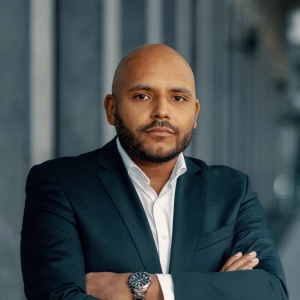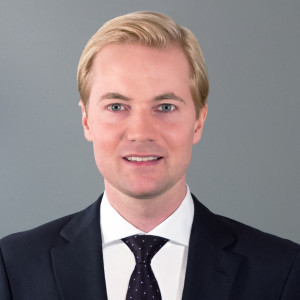When it comes to structuring cases, I feel I am getting better at listing MECE categories on the first layer, but sometimes I feel my second layer of my framework aren’t as organize or MECE as my first ones. Does the second layer of structure matter as much?
Second layer of framework


Hi there,
Short answer, yes. The second layer of the framework is where you can showcase your unique take on the problem and also demonstrate how structured you are in your answer. The first layer of the framework is often very similar to the generic, text-book frameworks. So it is crucial that you refine your framework to stand out from the rest.
This is a muscle that can be developed through lots of case practice. I remember, I was struggling with the exact same thing when I was preparing. Good luck!

Hi Anonymous A,
I want to emphasize one BIG misconception that I unfortunately see with many many candidates:
Structure DOES NOT equal frameworks!
The different frameworks that you can find in pertinent case literature provide a very good basic toolbox in terms of which areas to look into for certain types of problems.
However, they are very poor regarding HOW TO APPROACH a case and HOW TO DRAFT A ROADMAP for solving the case. This approach and roadmap needs to be rooted in rigorous and specific logic. Unfortunately the "framework learning philosophy" brought forward by, e.g., Case in Point, is the very reason why an overwhelming majority of candidates will not get an offer.
By and large, most (or probably all) casebooks on the market are teaching a fundamentally flawed way how to think about business / strategy / organizational problems! A framework as such is worth nothing if it is not embedded into the specific context of the situation!
This means, each element that you want to scrutinize ("building blocks" of the framework so to speak) needs to clearly relate back to the question that you want to address! This principle should form the basis of any structure.
This is why you ALWAYS start from the specific question that you want to answer! From there, you define the criterion or criteria that need to be met in order to anwer this core question in one way or another.
In 95% of cases, value creation will be the central element. Ultimately, this is nothing else than profit generation over a specific time frame.
You then draw a driver tree for profitability in order to isolate the numerical drivers for your solution. And then, only after you have drawn out the driver tree, you can map out the relevant qualitative "framework elements" to the sub branches.
This approach, visualized by means of a rigorous driver tree, is much much clearer then any framework you will find in any case book. And, contrary to such frameworks, which are hanging in the air and do not logically relate back to the specific question, this is a bullet proof approach when done rigorously.
The caveat is: this requires time and qualified coaching to internalize. But ultimately, this is how consultants think about problems - how can we optimize for value creation?
Cheers, Sidi
_______________________
Dr. Sidi Koné
Former Senior Engagement Manager & Interviewer at McKinsey | Former Senior Consultant at BCG | Co-Founder of The MBB Offer Machine™

Hi there,
- Learning to be consistently structured on all layers is important
- The 2nd layer is where it gets really problem-specific
- You should not think of additional layers as something you “have to do”, but rather as chances to break down the problem into additional relevant points
- I would advise doing structuring drills and spending up to 30 mins per framework to learn that. You can always get faster
- Please find some guidance in my contribution here: https://www.preplounge.com/en/consulting-forum/tips-for-structuring-framework-for-mckinsey-wild-card-cases-20206
Best,
Gero



Yes, structure and MECE very much also matter for the second layer. However, it does not have to be a new framework.
To avoid getting lost in the jargon, you can think about it as a smart categorization. Here smart = something that makes logical sense; smart does not mean complicated.
Hope this is helpful,
Ariadna

There's no perfect MECE, so don't stress too much about it.
In that sense, showing originality in the structuring process, an ability to actually put yourself in the shoes of the business owner, and so on, matter a lot more.
What I would avoid on the second level of the structure is to have obvious overlaps between the areas or structures which are ‘something / non-something’ e.g., financials and non-financial (which are a form of ‘dirty MECE’).
If you're interested in structure, you might want to read more about the first principles workshop I just launched:
Best,
Cristian

Hi there,
I would be happy to share my thoughts on your question:
- First of all, yes, every part of your initial structure must be well organized and logically sound. However, I am surprised that if the structure of the first level is well organized, you have problems with the structure of the second level because it logically follows the elements of the first level.
- Moreover, in such a case, I would advise you to reach out to an experienced coach to improve on the skill of structuring case studies. I have designed the Case Structuring Program specifically for those candidates who struggle with structuring a case study like a consultant would do.
If you would like a more detailed discussion on how to best prepare for your upcoming interviews, please don't hesitate to contact me directly.
Best,
Hagen

Yes absolutely - MECE is always important. It just means you are not repeating the same point in a different way or creating overlapping points that can be combined. Which layer it is should not matter.

Yes, you have to continue being MECE. Actually a major issue in frameworks is that on the second layer the candidate starts mentioning things that would fit better on a different branch in the first layer.
By the way, avoid having “buckets”. A “branch” should answer a critical question. The sub-branches should be the analysis that allow to answer the critical question in a complete way.

Hi there,
All layers and ideas matter.
There seems to be an issue with the top level of your structures. If the top-level is MECE, then lower-level ideas should automatically follow that distinction.
Always great to provide an example so we can help you better!
Cheers,
Florian













